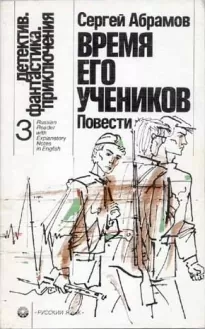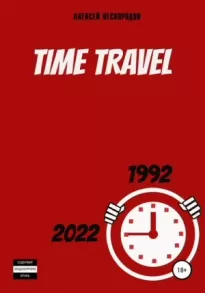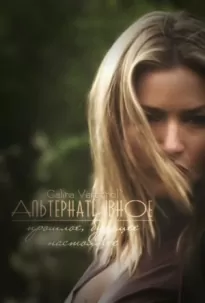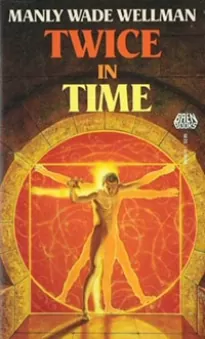Разговорный английский

- Автор: Владимир Войтенок
- Жанр: Самиздат, сетевая литература
Читать книгу "Разговорный английский"
FRED. Yes, it is indeed. Pass me the salt, Ann, will you?
ANN. Here you are. Some more bread, Fred?
FRED. Yes, please. What comes next, Annie?
ANN. Chops with roast potatoes, fish —.
FRED. And what follows that?
ANN. Wouldn’t you like to make a guess?
FRED. Stewed apricots as usual, I suppose.
ANN. There you are wrong, Fred. It’s apple dumpling2 with whipped cream!
JOHN. Apple dumpling, and with whipped cream! My, isn’t that fine!
ANN. I am happy that I’ve suited your taste, John. And do you like it, Fred?
FRED. Oh, yes. You know I do.
ANN. Do you take milk in your coffee, John?
JOHN. Yes, I do. (Ann hands him a cup of coffee.) Thank you. FRED. Well, John, what about a cigar?
JOHN. With great pleasure.
Vocabulary Note
1 Will a duck swim? (Fam.) — Еще спрашиваешь. С большим удовольствием. 2 apple dumpling — яблоко, запеченное в тесте
4. ENGLISH COOKING
Vegetable Soup
Peel and cut into very small pieces three onions, three turnips, one carrot and four potatoes; put them into a pan with a quarter of a pound of butter, a 1/4 of a po^nd of ham and a bunch of parsley; pass them ten minutes over a sharp fire; then add a spoonful of flour, mix well in; add 4 pints (2 litres) of broth and a pint of boiling milk; boil up, keeping it stirred; skim it; season with a little salt and sugar and run it through a sieve into another pan; boil again and serve with fried bread in it.
Potatoes Fried in Slices
Peel large potatoes, slice them about a quarter of an inch thick or cut them into shavings as you would slice a lemon; dry them and fry in lard or dripping. The pan should be put on a quick fire, and as soon as the lard boils put in the slices of potatoes and keep moving them until they are crisp; take them up and lay them to drain on a sieve. Send to table with a little salt sprinkled over them.
Stewed Beef and Pork
Put into a saucepan about 2 pounds (800 gr.) of well-soaked beef cut into 8 pieces; 1/2 a pound of soaked pork cut into 2 pieces; six tablespoonfuls of rice; 4 middle-sized onions peeled and sliced; a tablespoonful of sugar; a little pepper and salt; add 4 pints of water; simmer gently for three hours; remove the fat from top and serve.
Accepting these few hints on English cooking as a base, describe the way you do your own cooking.
5. ON ENGLISH FOOD
The usual meals are breakfast, lunch, tea and dinner. Breakfast is really a big meal, but one would find that lunch is not small either. The usual breakfast is porridge with milk or cream and sugar, bacon and eggs, marmalade with buttered toast, and tea or coffee.
At lunch, which is at about one o’clock, cold mutton (left over probably from yesterday’s dinner) or fish with potatoes, salad and pickles generally grace the table. English mutton is a treat, and it is prepared in such a way that you wouldn’t know it is mutton. Salad is a little different from ours. You only get the clean green leaves and the so-called “salad-dressing”, a mixture of oil, vinegar, salt, pepper and maoynnaise, that you may take according to your taste.
After lunch most people take coffee, though tea is the favourite beverage in England. That is why there are no “coffee-houses” there, but tea-rooms and luncheon-rooms there are in abundance. There is nothing like an English tea-party, be it at home or in the open air. Such little at-homes and outings do much to further sociability and make you feel on good terms with all the company in a short time, which is very helpful to a foreigner in England. Afternoon tea can hardly be called a meal. Tea is made at the table. It is very strong and mostly drunk with sugar and cream. It would be an offence to take lemon in your tea.
When outing, that is, on a picnic, the English load their luncheon baskets with all sorts of sandwiches made of thin slices of bread (as thin as a sheet) and butter with meat, ham, raw tomatoes or even cucumber in between. The latter are, of course, more refreshing than nourishing. There in the basket you would likely find, besides cakes and biscuits, some bottles of gingerbeer (wine is very dear in England as it is being imported from overseas).
Dinner, which is around 7 o’clock in the evening, begins with what might correspond to a Russian “zakuska,” followed by a clear soup, fish, roast chicken, potatoes and vegetables and dessert.
In simpler homes the schedule is somewhat different. In the morning they have breakfast, at midday-dinner, which is considered to be the chief meal, tea in the afternoon and supper in the evening. The supper might consist of an omelette or sausage, sometimes bacon and eggs or even a sandwich of bread and butter with cheese with a cup of coffee or cocoa.
VIII. Shopping
1. DEPARTMENT STORE
a) At the Hat Department
CUSTOMER. Have you a hat that will fit me, sir?
SALESMAN. Velour or felt, black or grey, sir?
C. A grey felt, if not too dear. What is the price of a good felt hat?
S. Here is one of superior quality for ... shillings.
C. Let me try it on. It is too small.
S. Let’s try another. This will do very well, I am sure.
С. I do not like the shape. Hats with so wide a brim are not to my taste; besides the crown is too high.
S. Excuse me, sir. Hats with narrow brims and low crowns are quite unfashionable now.
C. Well, then I must take it, but the band is too narrow; can’t you change it?
S. Yes, we can, but you will be charged one shilling extra for this kind of alteration, sir.
C. Never mind. How long do I have to wait?
S. Oh, it’ll be done in 10—15 minutes.
C. Very good. I’ll go over to the shoe department in the meantime. Which way am I to go?
S. It’s on the second floor to your right, sir.
{After some time the customer comes back.)
S. Here is your hat, sir. Would you like to see how it looks now?
C. Yes, please. Ah! That’s a great improvement. What is the price all in all?
S. ... shillings, sir.
b) Buying Gloves
SALESMAN. What can I do for you, young lady?
CUSTOMER. Will you, please, show me some gloves. I should like grey ones.
S. What kind of gloves would you like? Kid gloves or suede?
C. Kid gloves, please.
S. What size do you wear?
C. Really, I don’t know. I’d like to try them on.
S. Sorry, but it is not allowed to try gloves on. Permit me to take your measure, if you please.
C. With pleasure.
S. Your size is number 7. Here are gloves of that size. They are of the best quality.
C. They are nice, indeed. What’s the price?
S.... roubles.
C. That’s too dear. Have you no other, cheaper ones?
S. Oh, yes. Now do you like these?
C. They are not bad. How much are they?
S. ... roubles. We have still cheaper ones, but they are not so good.
C. I’ll take them. No, you need not wrap them up. I’ll put them on.
c) At the Textiles Counter
S. Are you being served, madam?
C. Not yet.
S. What can I do for you?
С. I should like some silk for a dress, please.
S. Natural silk? And what colour would you like?
C. Really I don’t know. May I ask you to help me make1 my choice?
S. With the greatest pleasure. Now, would you like it with a pattern or plain?
C. Well, show me something with a pattern, if you please.
S. Here is some fine silk that I am sure you will like.
C. The pattern is too showy. Something quieter, please. Show me that roll on the third shelf, please, the light blue one.
S. This one?
C. No, the other next to it, please.
S. Here you are. You might look at this as well — this is of much better quality.
C. Oh, yes, it is indeed. How wide is it?
S. 48 inches, madam. It’s folded, you see.
C. Yes, I do. How much would I need for a dress?
S. Well, it depends upon the fashion you choose.
С. I don’t want anything stylish — a dress of severe lines is what I like.
1 In colloquial speech (especially in American English) the verb to help often takes the infinitive without to.
S. I suppose six yards would do.
C. What’ll that come up to?
S. 3 pounds 6 shillings, madam. Shall I cut off the piece?
C. Do, please. Here you —.
S. No, you must pay to the cashier, please.
2. THE GROCERY SHOP
Going out to Shop
MARY. Isn’t it good that we have bought this refrigerator, mamma? Now we can buy in the things we need for the whole week.
MOTHER. Yes, it is very convenient indeed. Now, Mary dear, I’d like you to do some shopping as I am very busy now. I’ll send Tom along with you.
MARY. Yes, Mother dear. What must I buy?
MOTHER. Make a list of the things. First you drop in to Barker’s, the butcher’s, and buy some beef.
MARY. How much beef, Mother?
MOTHER. Well, let it be 2 or 3 pounds, but see that it is fat. The last time I was there he managed to wrap up a joint which happened to be very lean. If he plays such a trick on me again, I’ll never buy at his shop any more. That done, you go over to the greengrocer’s.
MARY. To Adam’s, ma?
MOTHER. No, better go over to Grossman, he is also a fruiterer. Buy 6 pounds of potatoes, I think six will do, and a good-sized cabbage.
MARY. Any beans, Mother dear? I like them very much.
MOTHER. Yes, buy 2 pounds of them. Now, we will need nuts and apples.
MARY. What sort, Mother? Cooking apples or for eating?
MOTHER. Buy 2 pounds of each. Put down a pound of mixed nuts and a dozen oranges as well. From the greengrocer’s you turn in to the baker’s, it’ll be on your way to the grocer’s. Pay Mr. Butler for the bread that we have had — two brown loaves, two white loaves and six rolls, it seems.
MARY. Isn’t it eight, Mother dear? You have forgotten that —. MOTHER. Yes, so it is. So at Butler’s buy one loaf of bread and —.
MARY. White, mamma?
MOTHER. Yes, — a dozen fancy cakes, and one pound of fruit cake. That’ll be all there. Before going along to the grocer’s shop call (round) at the dairy and pay our bill for the milk, one pint daily, and the dozen eggs that were sent to our flat last week.
MARY. Shan’t we need some extra milk today, mamma?
MOTHER. Yes, I think we shall. Don’t forget to take the milk-can. A pint and a half will do, I suppose. At the grocer’s buy a pound of fresh butter, a pound of bacon, but not too fat. You watch Mr. Carter closely or you will be cheated — he’ll give you it all fat. You might as well buy the sweets at his shop — a pound of caramels and a pound of chocolate with nut filling.
MARY. What kind of caramels, mamma?
MOTHER. At a shilling a pound. Well, get the shopping basket ready. Now where is that boy? You can never find him when he is wanted. Tom!
MARY. No need to call him, mamma. He’s out in the street. Give me the money, please.
3. MARKETING
VERA. Good morning, Nina!
NINA. Oh, that’s you, Vera! How nice that you have come.
VERA. 1 haven’t seen you of late so I thought I’d —.
NINA. I say, Vera, have you time to go with me to the market? Ma feels unwell and she wants me to do the shopping.
VERA. Why, yes! I am quite free.
NINA. Just wait a minute while I get the bag ready. Where can it be, I wonder? 1’11 go and ask —.
VERA. It cannot be in the larder, Nina, can it?
NINA. Of course, it must be there. (Comes back with the bag.) Well, let’s go.
VERA. Have you taken the money?
NINA. Oh, what a silly I am! Going to the market without a rouble in my pocket. Nice, indeed! (Goes out and shortly comes back.) Well, seems to be all. Come on.
(At the market.)
VERA. What do you want to buy?
NINA. Some meat, eggs, vegetables and some berries.
VERA. Are berries in season now?
NINA. They are. Now, what shall we buy first? Vegetables?
VERA. I think so. Where do they deal in vegetables?
NINA. I don’t know. This is the first time I’m out marketing. Over there is seems.
VERA. Say, Nina, let’s go over to that woman over there. See what a wealth of vegetables she has.
NINA (to the saleswoman). How do you sell the cabbage, by the head or by the kilo?
SALESWOMAN. By the head. Here is a nice head, young lady.
NINA. Show me that nicely trimmed one over there, please.
SALESWOMAN. Here you are. See how firm it is.
NINA. Yes, I shall take it.
SALESWOMAN. What else would you like?
NINA. A bunch of carrots, please. No, those are overgrown. Give me the bunch next to it. Yes, that one.
SALESWOMAN. What else, young lady?
NINA. Now pick out ten cucumbers, please.
SALESWOMAN. Here, please. Right from the garden. Some onions?
NINA. Yes. How do you sell them?
SALESWOMAN. These — by the ten, and these of (the) smaller size — by the kilo.
NINA. I’ll take ten of these.
SALESWOMAN. Here’s a couple of small ones into the bargain. You are one of my best customers. Vegetables sell badly today.
NINA. What does it come up to?
SALESWOMAN. Now, let me see. A cabbage, that’s fifteen, a bunch of carrots — ... roubles, please.
NINA. Here you are. Thank you.
4. MONEY
English Money (before 1971)1
The British system of money is rather difficult. The Bank of England issues silver and copper coins, and banknotes, that is, paper money; gold coins, which were formerly issued, are not in circulation now. Pound sterlings, shillings and pence are used in England.
The copper coins are the penny (1 d) twelve of which make a shilling, the halfpenny (| d) ['heipm] and the farthing (0.25 d).
The silver coins are the shilling (1 s; 1/-) twenty of which make a pound, the two-shilling piece (2 s; 2/-), the half-crown (2 s. 6 d; 2/6) worth two shillings sixpence, the sixpence (6 d) and the threepenny piece (3 d). A new threepenny piece has recently been coined. It is made of a mixture of copper and brass, and it is not round like the other coins, but twelve-sided.
The pound sterling (£ 1) is generally met in the form of the pound note which can be changed for two ten-shilling notes.
In addition to the £ 1 and 10 s. notes there are also banknotes of £ 5, £ 10, £ 20 and of larger denominations.
Note: Twopence is usully pronounced ['txpans], three halfpence (or a penny-halfpenny) — ['0ri:'heipans] and threepence ['0ri:pam].
American Money
The American unit is the dollar ($). In the dollar there are 100 cents (ф). A 5-cent coin is called a “nickel”, and a 10-cent coin, a dime.
5. WEIGHTS AND MEASURES
English weights and measures are even more confusing to a foreigner than money, but luckily you don’t need all those that are generally given in reference books. The essential ones are not more than eleven or twelve in number.
For general use the smallest weight is 1 ounce (written oz), and there are 16 ounces in a pound (written lb). The English buy sweets, tobacco, and sometimes cigarettes by the ounce while most groceries
1 This text describes the old, non-decimal system which is no longer used in Britain. However, we continue to meet references to it in books published before 1971, or dealing with events prior to 1971. Later decimal currency was introduced with two units of currency — pounds (£) and pence (p).
or fruit, such as apples, pears, strawberries, by the pound, half-pound or quarter-pound (there are some kinds of fruit that are bought piecemeal).
Fourteen pounds is 1 stone. The English always give people’s weight in stones and pounds. For example, a man weighs 11 stone 9 lbs (not 163 lbs). 112 lbs make up 1 hundredweight (written cwt) and there are 20 hundredweights in a ton.
Liquids are measured in pints [paints], quarts and gallons. There are 2 pints in a quart and 4 quarts in a gallon.
Finally, for length the principal measurements are inches, feet, yards and miles. The easiest way to remember them, perhaps, is a little table like this:
12 inches (in) = 1 foot (ft)
3 feet = 1 yard (yd)
1.760yards .... = lmile
Adapted from “Essential English for Foreign Students”by G. E. Eckersley
IX. Clothes. Dressmaking and Tailoring
1. THE SECRET OF BEING WELL-DRESSED
No matter how much or how little money you have to spend, never buy any new clothes before going through your existing wardrobe to see whether you need them or not. But your wardrobe ought to contain certain essentials, and if it does not, you must plan your whole dress budget to include them.
Nearly every woman has to economize these days in order to include in her wardrobe at least some cheaper suits and dresses. When you buy your clothes, go in for simple, well-cut suits and dresses that will look “right” for almost any occasion. Concentrate on styles that are not expensive but elegant and remember that the keynote1 of all good dress-making is simplicity. Don’t be led astray2 by frills, elaborations and passing crazes3, unless you have an income suited to them.
A winter coat is a basic need and, although it may be an expensive item, it is not an extravagance, because it should be wearable for several seasons. Fashion in big coats rarely changes more than once
in four or five years and even then you can safely lag behind, provided you choose a loose undatable style4. Don’t invest in a fur coat unless you can afford the best of its kind. Choose a cosy-looking big coat in any material that suits you — the hairy fabrics5 are the latest, but remember that you’ll tire of them more easily than the smoother woollens.
A well-cut suit is another essential. If its lines are plain, it won’t go out of fashion for several years, and it will continue to look good to the very end of its days. You can prolong its life by having an extra skirt to divide the wear and tear6 because jackets always outlast skirts.





